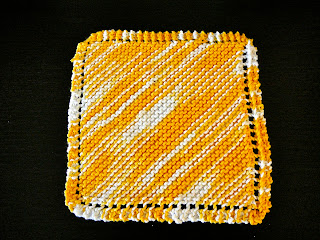Anyone who reads this once in a while will notice that the "voice" in this is different, although the stories are familiar. I wrote this narrative as a presentation, and didn't quite find a balance between my writing voice and my presentation voice. It was fun, sharing my Home Ec misadventures with a new audience, however, and we all had a good laugh or two. The next day, my grade 8s made advanced quesadillas (which is regular quesadillas but with onion chopping, and other veggies). It was better than their attempt at Fruit Crumble.
Two years ago, I was teaching grades 6 and 7, when our
Home Ec teacher approached me to talk about what Home Ec would look like when
we moved into our new school. It would be “healthy
living”, and there would be a garden and a dedicated space for recycling,
and wouldn’t I like to teach that?
We met with our principal and arranged to trade places.
 |
| Our New LEED Gold School - to be completed... |
Early the next morning, I realized that I had just
agreed to teach cooking and sewing to middle schoolers. I would now be in
charge of a room full of pre-teens with knives.
We haven’t moved into our new school yet, so there’s
no garden, no recycling, and “healthy living” is disguised as Chocolate Quinoa
Cake. I started blogging my Home Ec experience early in the year and realized
that amidst the chaos, there was a great deal of learning, and that teaching
Home Ec was really fun.
Halfway through the first year, a grade 8 girl groaned
loudly during class and said “Why do we have to learn all this farming stuff?
What has this got to do with food?” And I knew had to make the connections more
explicit.
I brought in a chicken incubator so that each term
could hatch chicks. Only one or two students per class had ever seen chicks
hatch. One child told me with complete confidence that “chicken” comes from
cows.
Once those eggs started to wiggle and chirp, the
students were engaged. Looking after the chicks was a great springboard for
learning about chickens and eggs, discussing factory farms, and talking about
sex. How do chicken eggs get fertilized anyway? They thought it was similar to
fish egg fertilization. A week after hatching, the chicks go back to the farm.
These chickens are pets, not food, and we love them dearly.
My goal
is to help my students start to understand the complex systems that bring them
foods and textiles. Home Ec is an amazing blend of practical, applied skills
and critical thinking. For the most part, though, I debunk urban legends.
They
complained when I introduced a vegan recipe. One girl said she wasn’t allowed
to drink soymilk because her dad said it was bad for girls and would stunt her
growth. A boy mentioned that boys shouldn’t drink soymilk because it makes them
less manly. They know all the bizarre stories about fast food outlets but
didn’t know their strawberry fraps are coloured with ground up bugs (cochineal).
We
learned about Where Does it Come From and Where Does it Go, with a focus on
water and waste in the first year, and agriculture in the second.
Using
big satellite maps, the students struggled to find their place in the world, or
rather, the Metro Vancouver area, placing themselves firmly in Stanley Park,
high on a mountaintop, or in south Surrey instead of Port Coquitlam,
conveniently located in the centre of the map. When challenged to find the
source of their drinking water, many students indicated the ocean. Of 400
students, perhaps only a dozen have visited the Coquitlam watershed, and most
of those think that the building is
the watershed reservoir, not the lake.
I teach
each cohort for 7 – 9 weeks, for 41 minutes a day, and in that term we squeeze
in 4 cooking labs, a textiles project and as much food related news as I can.
 |
| Who knew you could MAKE dishcloths? Cool! |
Last
year in textiles, they all learned to knit. I thought they’d be more tempted to
learn if I offered them a “cool” project. Who knew that dishcloths were cool? They
made mini dishcloths.
This year, they’re all hand sewing. The grade 6s and 7s are
making phone cozies or stuffies and the grade 8s are making aboriginal-inspired
buttons banners. The students are willing to try any challenge I throw at them
and the results amaze me. Not their kitchen skills, so much, but their
creativity, their persistence and their talent for asking me the hard questions
and demanding serious answers.
As a middle school home ec teacher, I now teach 400
students a year, all between the ages of 11 and 14. My goal is to encourage
them to become informed consumers who ask questions and demand answers about
their food, their clothes, and the world in which they live.







No comments:
Post a Comment